Politics
Greater Buffalo: Cuomo's Campaign to Win Western New York
It’s Kickoff Day for the Buffalo Bills’ 2014 season. And because the Bills are playing in Chicago, Ralph Wilson Stadium is empty, and it’s TV time for Western New York. Across the street from the sprawling Boulevard Mall, more than 200 men, women and children are packed in a Buffalo Wild Wings restaurant, sporting Bills jerseys, scarfing down wings and drinking tall glasses of Bud Lite. In between touchdowns, political commercials flash on the screen: “He’s a RINO—a Republican in Name Only. We can’t trust Mark Grisanti.” But no one pays attention.
This is Tonawanda, a middle-class suburb just north of Buffalo. Buffalo’s Italian-American population moved here after World War II, leaving the city behind and never looking back. And as Buffalo’s factories shut down, and crime and urban blight blossomed in their wake, many residents of Tonawanda started fearing the city’s center and took up arms for protection.
When Andrew Cuomo first ran for governor in 2010, he easily defeated his opponent, Erie County developer and Tea Party personality Carl Paladino, racking up 62.6 percent of the vote to Paladino’s 33.3 percent. Cuomo dominated in practically every corner of the state minus a few small counties upstate (Hamilton, Fulton and Schoharie) and in the Southern Tier (Tioga, Steuben, Allegany).
That is, excluding Western New York. In Erie County, Paladino blew Cuomo’s hair back, beating him with 172,322 votes to Cuomo’s 113,459. And while Cuomo took Buffalo proper, it was in the suburbs where he really got trounced. In Tonawanda, for example, Paladino ran up a tally of 15,630 compared with Cuomo’s 9,575.
Since assuming office in January 2011, Cuomo has focused intensely on Western New York, both politically and from a policy standpoint. While he has never expressly stated it as one of his aims, it is a commonly held belief among pundits that the governor has made a concerted effort to win Western New York this time around—and win it big.
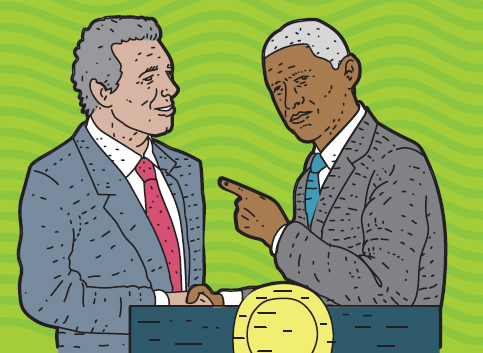
The theory is that the governor wants to run the table in every region of the state, and in so doing demonstrate the broad popularity of his centrist, pragmatic approach to governing and his appeal to voters across the ideological spectrum and geographic divide.
On paper, Cuomo has done everything in his power to pull Western New York into his column this cycle, showering it with attention and economic development dollars. In practice, however, he still has a way to go before he’ll be able to seduce Tonawanda voters like Keith Stewer.
Stewer, a supervisor at a local steel plant, left Buffalo Wild Wings at halftime with his young son, heading for home. As he walked to his black pickup truck, he explained why he is not likely to vote for Cuomo anytime soon.
“With the gun control issue, I started getting more interested in politics,” Stewer said, referring to the New York Secure Ammunition and Firearms Enforcement Act of 2013— commonly known as the NY SAFE Act—a law spearheaded and signed by Cuomo that bans the possession of high-capacity magazines and requires ammunition dealers to conduct background checks of their clients. “I live in North Tonawanda, and there was a double murder last Friday night. They’re not worried about the innocent guy who goes to work and pays his bills. They’re making the good guys seem like criminals. I guess I just don’t understand why.”
In the four years since Western New York gave him the stink eye, Andrew Cuomo has dedicated an astonishing amount of time and resources to one of New York State’s previously most neglected regions. Indeed, most local politicos and businessmen agree that in at least five decades no governor has put more energy into revitalizing Erie County than Cuomo. He has spent hundreds of millions of dollars on redevelopment projects, personally intervened to help keep the Buffalo Bills in town, and resolved the dispute between the Niagara Falls Seneca Casino and the state of New York, freeing up hundreds of millions of dollars to be spent on a desperately impoverished city. Along the way, Cuomo has logged an impressive number of man-hours in Buffalo, working retail politics at a feverish pace, while simultaneously wading into the region behind the scenes.
While the impact of Cuomo’s efforts is debatable, what is indisputable is that Buffalo is on the move for the first time since the 1950s. Though unemployment remains a stubborn 6.4 percent, new green technology industries are sprouting, and the city’s medical research sector is about to take off. Developers are renovating old brick warehouses into hotels downtown. Cranes—honest to goodness cranes— can be seen along the city’s skyline in increasing numbers.
Nonetheless, it remains to be seen whether Erie County’s residents will credit Cuomo for the area’s budding resurgence. Most of the money the governor has earmarked for Buffalo has yet to result in jobs, and for now is only an abstract commitment, one that will not produce tangible benefits for years to come. Moreover, despite the governor’s focus on the region, a lingering resentment persists among some area residents toward Albany and downstate bigwigs who have long treated Erie County as a useless appendage. Additionally, social and cultural issues such as gay marriage and gun control still resonate strongly with older suburban white voters.
Will all the money Cuomo has committed to Erie County ultimately trump decades of distrust? Only Election Day will answer that question.
If you talk to Cuomo’s Buffalo supporters, they will tell you that the governor’s 2010 loss in Western New York can largely be summed up in two words: Carl Paladino. The lion’s share of New York City voters may have regarded the Republican’s nominee as a logorrheic lunatic, but in Erie County, Paladino is a well-respected businessman and developer who provides tons of jobs and generously helps charities. His off-the-cuff populist swagger, combined with crusades like successfully suing the State Thruway Authority to remove a hated toll on drivers entering Buffalo, has a certain charm for residents of Erie County.
“There is only one reason Cuomo lost here, and that’s because Carl Paladino is a well-entrenched local favorite,” says Tony Masiello, who served in the state Senate for 13 years before becoming Buffalo’s mayor for another eight. “If Carl Paladino wasn’t the candidate, [Cuomo] would have cleaned up.”
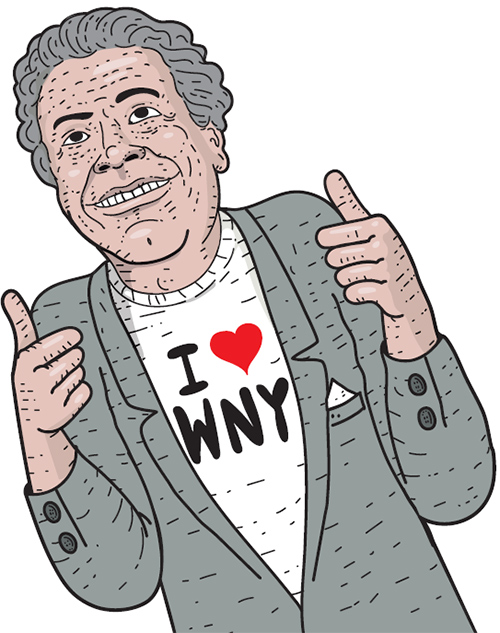
But according to Michael Caputo, who served as Paladino’s campaign manager in 2010, Paladino didn’t just beat Cuomo because people knew his name. Paladino articulated a common grievance: that Buffalo was sick and tired of being taken for granted by the rest of the state and that it was high time someone paid attention to it.
“If you’re from downstate, people tend to dismiss Paladino as a bigot and a loudmouth,” Caputo says. “But Western New York—the people who are isolated from Albany and downstate—was extremely angry about taxes, corruption, spending and the business environment. People were starting to understand who Shelly Silver was. And so Carl’s angry veneer played well.”
Jack O’Donnell, who ran U.S. Sen. Chuck Schumer’s Buffalo office and is now a lobbyist with the firm Bolton– St. Johns, has spent years with his ear to the ground in Erie County politics. He agrees that Paladino tapped into Western New Yorkers’ widely held feelings toward statewide politics. “A lot of folks here feel like we’re not at the table. Their aspirations and fears are not being heard in Albany,” O’Donnell says. “It was a scream in the dark, if that makes any sense.”
A scream the governor heard loud and clear—and has done his utmost to answer. As to why he has heeded the cry when so many other governors have largely ignored it, there is ample speculation: Perhaps Cuomo plans to run for president and wants to demonstrate that he can win in areas that lean red. Maybe his aim is to equal or eclipse his father’s legacy as a three-term governor, and he is trying to shore up every part of the state as a deterrent to any would-be challengers. Maybe he wants to show that he was able to turn around a Rust Belt city— an enigma so many other politicians have grappled with yet failed to solve.
Nick Langworthy, the chair of the Erie County Republican Committee, believes Cuomo can’t stop thinking about the region because it rejected him. “He’s been downright obsessed with Western New York since the election,” Langworthy says. “He’s come out here a lot and has spent a lot of state attention. Which is a good thing, but I think it’s driven by the governor’s obsession to win the hearts and minds out here.”
The governor has not just been listening to the concerns of Western New Yorkers. He has also been pumping public money—hundreds of millions of dollars worth—into the local economy.
The most prominent component of Cuomo’s approach is his vaunted “Buffalo Billion” initiative. Pledging to earmark $1 billion in state funds over 10 years to spur economic growth in Erie County, the governor has already allotted $168 million for a concentrated investment in the city’s high-tech and clean energy sector. The centerpiece of this plan is $118 million to fund “Riverbend,” a project that will convert two old steel and metallurgic coke processing facilities near downtown into a campus for solar energy production; the California-based clean energy firms Soraa and Silevo have already promised to move in. Over time, according to the governor’s office’s projections, the investments will create 1,200 biotech, high-tech and clean-energy jobs.
That certainly sounds like a promising start. But Michael Caputo claims that Cuomo’s Buffalo Billion plan is more gimmick than substance. The governor, Caputo says, is merely taking ordinary budget reallocations and corporate welfare, dressing them up as an unprecedented investment program, and pitching them to naive Erie County voters. “It’s basically packaging and branding and marketing government money,” he says. “I mean, he’s got a Madison Avenue level of public relations on this one. He’s marketing it like a breakfast cereal.”
Nick Langworthy won’t say no to state money coming into the region. But he argues that the Buffalo Billion initiative is no substitute for long-term responsible economic policies that will nurture new businesses for the indefinite future. Dangling one-time subsidies, he says, will only work until the subsidies dry up. “I think this investment has been a long time coming, but we would be better served by a policy that embraces long-term job creation, not one-shots,” he says. “We’re talking lowering taxes, getting regulations out of the way, so businesses can come here and flourish. It’s no accident that Texas is exploding with population and jobs, and Rick Perry is coming here to lure businesses away.”
Paladino, never one to mince words, derides the Buffalo Billion as nothing more than bribery. “This is as crooked as the day is long!” he declares. “The day after the election, he’ll forget about Western New York.”
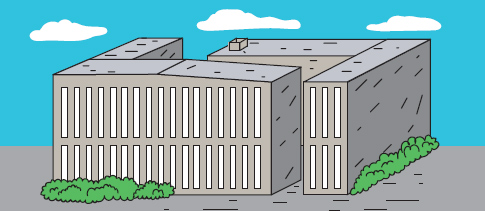
But where Cuomo’s enemies see cynicism and shortsighted payola, his friends and supporters see a smart, deliberate dose of economic stimulus. In Jack O’Donnell’s opinion, the Buffalo Billion represents a break from the old model of spreading the pork around to whoever can supply votes in November. He considers it a savvy, strategic attempt to nurture new industries on a meritorious basis.
“Rather than do a big road project on the West Side and some infrastructure improvements on the Union Ship Canal, you spend that money in the same place, in a way the yields an exponential return,” he says. “Instead of just creating those construction jobs, the idea is to make an infrastructure of industry and ideas. … By focusing in one area and coordinating it, you’re able to bring in these industries that are high growth, high job creation.”
Everyone likes to talk about the Buffalo Billion project. It is a billion dollars, after all, at least in theory—not to mention a euphonious alliteration that brings to mind the city’s beloved Buffalo Bills. However, perhaps surprisingly, when asked what the governor has done for Western New York, Cuomo’s supporters don’t tend to bring up the Buffalo Billion first. They talk about UB 2020.
For years administrators with the University of Buffalo had been planning to move their School of Medicine and Biomedical Sciences to downtown Buffalo, in order to integrate their work with private biotech firms and to develop the Buffalo Niagara Medical Campus into a state-of-the-art center of medical research. Partnering with Buffalo General Hospital and the Roswell Park Cancer Institute, the project would ultimately commit $375 million to create 3,000 new jobs and build what dreamers hope will put Buffalo-Niagara in the same sentence as Johns Hopkins. But first they needed $35 million from the state.
Much to the frustration of UB 2020’s proponents, the efforts to secure this funding had long been stalled in the state Legislature. According to Mark Schroeder, a former assemblyman and Buffalo city comptroller, neither governors Eliot Spitzer nor David Paterson could convince the Legislature to allocate the seed money to get the project started. When Cuomo came to Albany, however, he leveraged his popularity and mandate to break the logjam.
“I can assure you that UB 2020 never, ever could have happened without this governor,” Schroeder says. “Shelly Silver had no interest in it, none. And the very liberal Democratic Assembly members from New York City had contempt for this opportunity. It took the governor to convince the Speaker that one of the most important components to Buffalo was UB 2020.”
According to Tony Masiello, UB 2020 has inspired a cluster of synergistic downtown development, with local businessmen building new projects in conjunction with the medical campus. “You’ve got Paladino, Nick Sinatra, Lou and Paul Ciminelli, all buying up property around there and transforming it into new mixed-use space,” he said. “This isn’t just pie in the sky. This is actual money being spent. They’re putting the face on the steel now.”
In addition to UB 2020, Cuomo has been fostering other economic development projects in Buffalo, mostly by dropping a bundle in state subsidies. In December 2012 he gave the Buffalo Bills $54 million in stadium renovation funds in return for a 10-year extension on their lease at Ralph Wilson Stadium, buying time to negotiate with whoever bought the team to keep it in town.
The governor also convinced the New York Power Authority’s board of trustees to offer low-cost hydropower to Western New York to lure businesses to or retain them in the region. As a result, Yahoo! announced plans to expand its Lockport data center and inject $130 million into the local economy. Cuomo’s Start-Up NY program, which offers a 10-year break from sales and property taxes for businesses that move to certain underserved parts of New York State, recently bore fruit for Buffalo; eight biotech and high technology companies have promised to move into the tax-free zone around the University of Buffalo.
The three major credit rating agencies seem to like what they see happening. Over the last two years, Fitch, Moody’s, and Standard and Poor’s have all upgraded Buffalo’s credit rating. In March, when Moody’s announced its most recent report on Buffalo’s creditworthiness, it singled out Cuomo’s Buffalo Billion program as a significant factor.
While Cuomo deliberately did little campaigning during the primary to downplay the threat posed by his challengers, he hit the trail relatively hard in Erie County. His campaign launched a massive television advertising buy in the days leading up to the Sept. 9 primary election, deluging Buffalo with the most money of any market besides New York City. And in a move emblematic of his focus on the region, on the eve of the primary Cuomo held the final rally of his campaign in the Erie County town of Orchard Park.
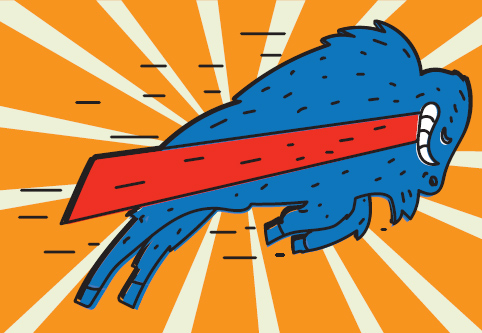
By his side at the event was Kathy Hochul, the Buffalo native and former congresswoman Cuomo had added to his ticket in May as a replacement for his first term lieutenant governor, Robert Duffy. Cuomo’s choice of Hochul, whom the governor hailed as a “hometown hero” at the rally, was widely perceived by political observers as part of his effort to woo Western New York, while simultaneously serving as an olive branch of sorts to voters in places like Tonawanda, who harbor anger at the SAFE Act, since as a right-of-center member of Congress Hochul had trumpted her 2012 endorsement by the National Rifle Association’s Political Victory Fund—though she has since distanced herself from the NRA, engendering the organization’s ire.
While the ultimate test of Cuomo’s courtship of Western New York will be the general election, based on the results of the primary, it appears that all of his overtures have not been in vain. Though Cuomo’s opponent, Zephyr Teachout, defeated him in 31 of the state’s 62 counties, the governor dominated in Western New York, winning 69.6 percent of the vote in Niagara County and a whopping 76.3 percent in Erie County.
Hochul, who celebrated her victory over Teachout’s running mate Tim Wu at a series of parties in Buffalo, did even better in the region, pulling over 70 percent in Cattaraugus, Chautauqua, Niagara, Wyoming, Livingston, Gennesee, and Orleans counties. In her home county of Erie, Hochul polled just shy of 80 percent, almost 20 points higher than her statewide total.
Just after midnight on primary night, outside the Buffalo Irish Center, Hochul explained what Cuomo had done to garner the support of Democratic voters in the region. “The governor’s recognized that Western New York has experienced benign neglect from Albany,” Hochul said. “He’s felt very strongly that this is an area with great potential, but needs more attention. … People hear lots of promises, and after election time has come and gone, it’s disappeared. Not with this governor.”
While the primary numbers would seem to augur the result Cuomo has worked so hard to achieve in Western New York, it will not be only Democrats who vote in the general election. To many Republicans and independents in the region, Cuomo still comes over as a liberal downstater, who is out of touch with their values and who has zealously imposed his social agenda upon them. To these voters, all of Cuomo’s efforts to appeal to Western New Yorkers—even with the massive advantage in campaign cash he has over his GOP opponent, Rob Astorino—might not be enough to put him over the top.
“I think there’s still a very good chance he’ll lose Erie County,” says Langworthy. “I think that people are a lot smarter than some politicians give them credit for. They know when their votes are trying to be bought.”
For many of the governor’s critics, nothing illustrates the negative perception they have of him better than Cuomo’s stance on gun control. When he signed the SAFE Act into law, Cuomo signaled to many Western New Yorkers that he was prepared to take from them one of their most cherished freedoms. That may not have been the message he meant to deliver, but that was nonetheless how it was received.
“The day after the SAFE Act was passed, I went out and bought another gun,” says Frank Boncore, an electrical inspector and the secretary for the Buffalo chapter of the Shooters Committee on Political Education. “And I’m telling all my friends, all my acquaintances: Cuomo can be beat. There were 4,000,000 voters in 2010. There are 6,000,000 gun owners in New York State. We have to wake up our people, and we can win.”
Back at the Buffalo Wild Wings in Tonawanda, the Bills are about to head into sudden death. Outside, the sun is burning down on the parking lot, and fans are starting to burn out on the game. Dan, a manager at a nearby copier company who declined to give his last name, shared his thoughts about Cuomo before he walked to his car.
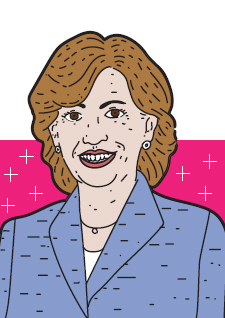
“I think the Democrats have ruined everything,” he says. “They take from the rich and give to the poor. And you have to work harder and harder to make it.”
Dan didn’t vote in the last gubernatorial election; he didn’t see the point. “New York, it’s always Democrats, it’s always going to be some New York City Democrat. … In the old days, you’d get to know the politician. These days, it’s all about advertising. They used to come around and knock on your door. You don’t get that anymore.”
Buffalo Wild Wings offers the courtesy of a public address system outside the restaurant, so its patrons can keep up with every moment of the action even in the parking lot. The game’s announcer squeals, “On Kickoff Weekend, we are headed for overtime in Chicago!”
Alex Solomon, a Buffalo-based hospital administrator in his 30s, takes in a little air before heading back in to catch the final minutes of the game. A libertarian who grew up in the nearby suburb of Amherst, he wouldn’t vote for Cuomo if you paid him.
“He’s a politician—his job is to get re-elected,” Solomon says. “I’m not a Democrat, I don’t trust the man, and I think he’s just trying to bribe us.”
Solomon appreciates the money Cuomo has poured into the region— “Usually, spending money on an area doesn’t hurt it”—but it doesn’t change his mind about the governor.
“I know a lot of guys who are veterans, and they’re like, ‘Why are we arming the police and taking away guns from citizens?’ ” Solomon says. “The government is just getting into our lives too much.”
The crowd cheers over the PA, and the residents of Tonawanda start spilling out of the restaurant. Solomon’s buddies stalk past him, and he breaks away from politics to ask the most important question of the day.
“Did we win?”
“Oh, yeah.”

NEXT STORY: A “Best In Class” Approach to Problem Gambling